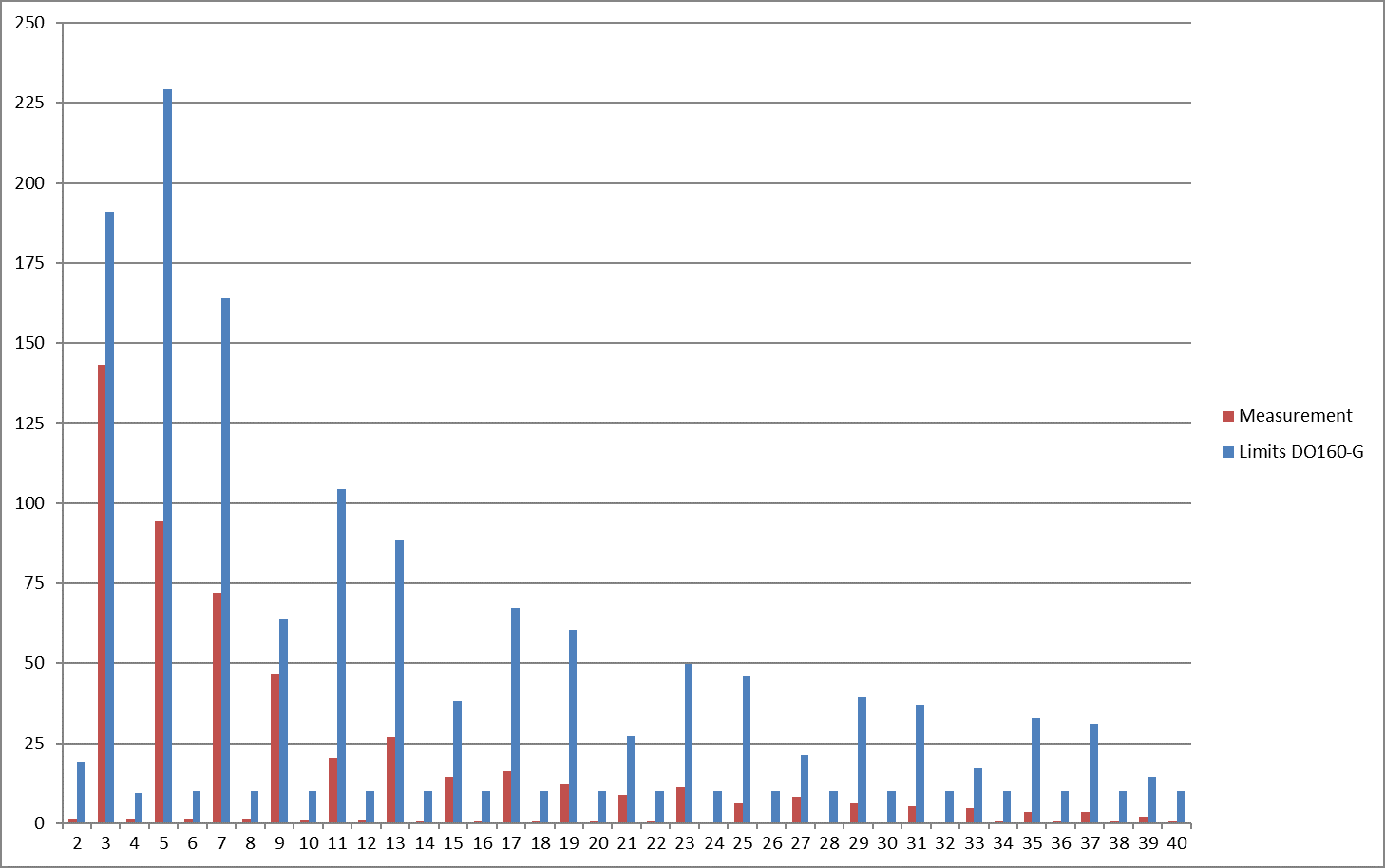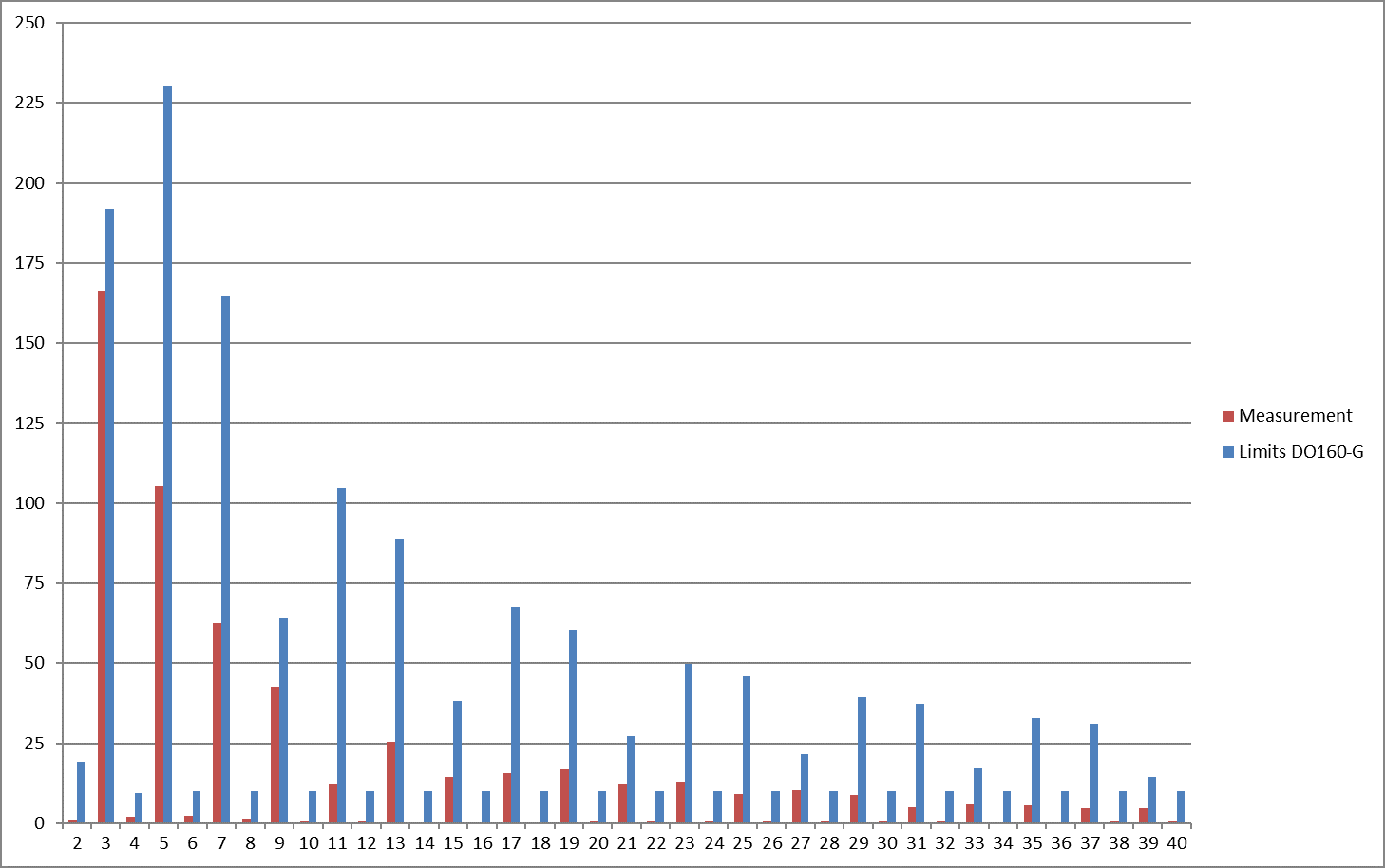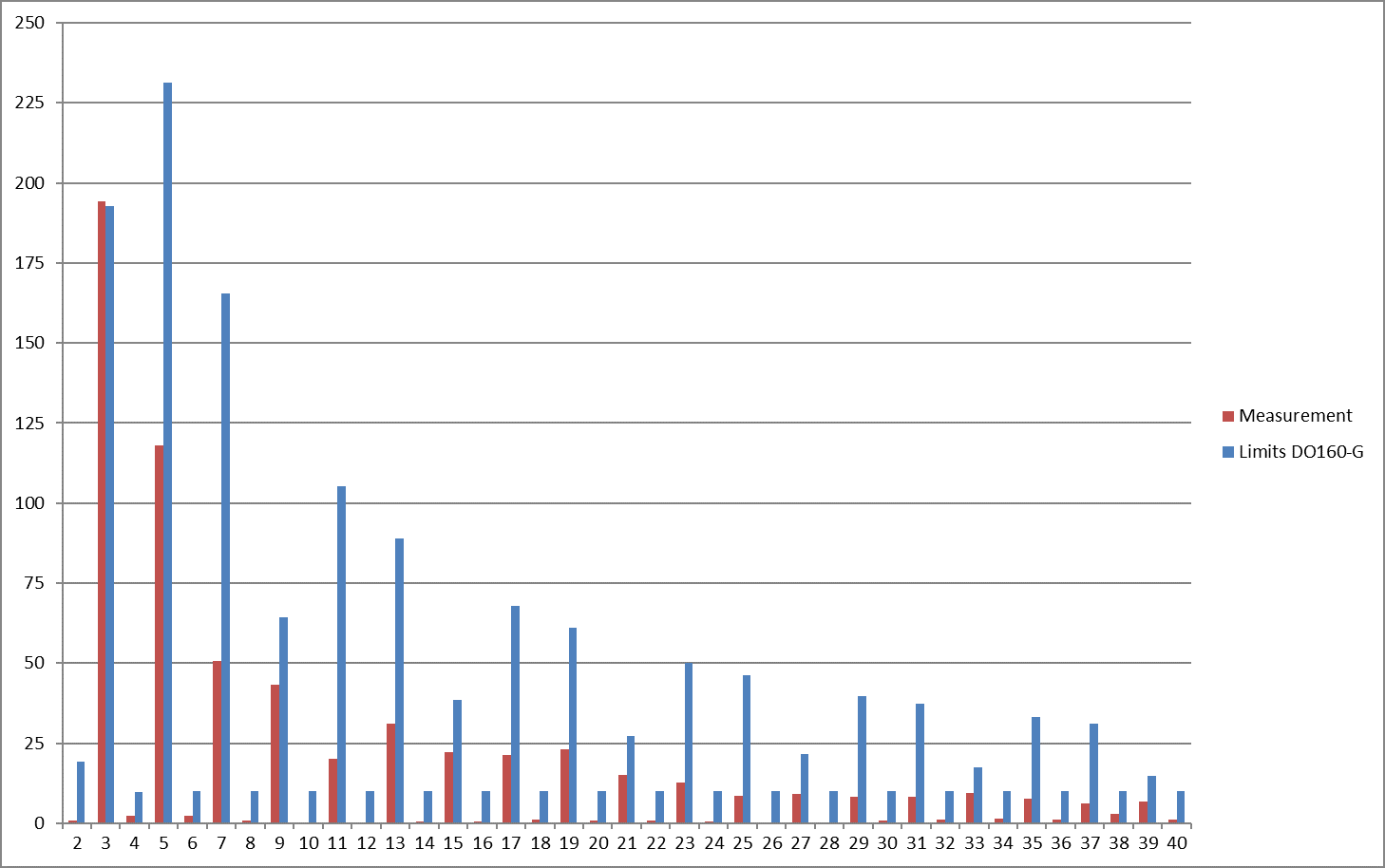TIDT292 June 2022
2.6 Input AC Current Measurements: Compliance to DO160 Harmonic Limits
All harmonics were tested according to the DO-160-G limits.
In details, measure the first harmonic (fundamental) of the current at full load and nominal VAC (in this case 115 VAC). The AC source frequency was set to 400 Hz, 600 Hz, and 800 Hz.
For all even harmonics with order > 4, it should be considered an absolute limit of 10 mA, regardless on the order number (DO-160-G limits). Figure 2-8 through Figure 2-10 show each harmonic current (in mA) versus number of order.
 Figure 2-8 F = 400 Hz
Figure 2-8 F = 400 Hz Figure 2-9 F = 600 Hz
Figure 2-9 F = 600 Hz Figure 2-10 F = 800 Hz
Figure 2-10 F = 800 Hz